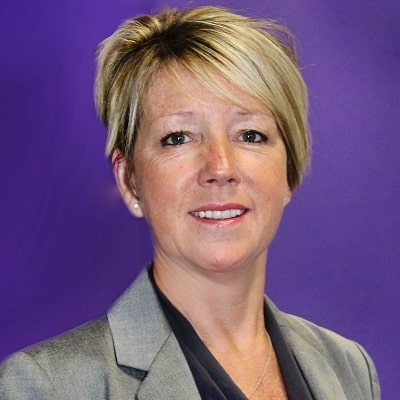
TV PANEL SUMMARY
Digital Engagement for the ‘Next Normal’
2020 has brought more disruption than could have ever been anticipated. Banks have risen to this challenge, rapidly mobilising to manage a surge in digital demand, rolling out new products at unprecedented speed and scale and working hard to keep customers and staff safe. Our hospitals may have moved out of crisis mode but banks are still on a war-footing as they help customers navigate the stormy waters of the post-lockdown economy. As panellists on the recent MoneyLIVE webinar Digital Engagement for the ‘Next Normal’ agreed, many of the changes introduced as a result of the crisis may become permanent features as we all adapt to a pandemic world.

“We saw a tsunami of activity online as a result of the pandemic.”
“We saw a tsunami of activity online as a result of the pandemic,” said Alison Davies, Head of Digital at Skipton Building Society. “At peak we saw a 37 per cent increase in activity and not all of those customers will go back to the way it was before.”

“We saw an 89% increase in digital registration but there was also a surge across all of our channels.”
Accelerating automation
Independent industry expert Maria Lagutina said the crisis had accelerated trends already underway as banks sought to handle demand from distressed customers. “There was real pressure on the banks for payment holidays and urgent cash release and the usual channels of contact centres could not cope, so almost overnight banks started to reinvent themselves to use other channels, like social media, AI web chat and video conferencing.”

“To handle repeat enquiries, we got our virtual assistant to answer them. Pre-COVID-19 it would have taken us a while to make this change but we had it powered up in just three or four days.”
Charity Wood said the pressure to respond unlocked solutions at real speed. “To handle repeat enquiries, we got our virtual assistant to answer them,” she explained. “Pre-COVID-19 it would have taken us a while to make this change but we had it powered up in just three or four days.”
Automation came into its own to meet unprecedented demand. “For payment holidays we automated that process from end-to-end, making it as simple and easy as possible for customers and thereby giving our colleagues more time to spend on those with more complex needs,” said Wood.
The human touch: more important than ever
The rise of digital was not at the expense of human contact points, however, which truly showed their worth as they dealt with the most urgent and pressing cases. “In our contact centres the element of reassurance that staff can give on the phone, through video and webchat at a time when branches are on reduced hours has become really important,” said Alison Davies of Skipton Building Society. “It’s about providing that empathy and the human touch when it really matters.”

“Will we see a reimagining of KPIs? Yes, the job is about sales and service but it’s also about empathy.”
Maria Lagutina, an Independent Industry Expert, agreed and wondered how this new understanding will continue in the future. “Will we see a reimagining of KPIs?” she asked. “Yes, the job is about sales and service but it’s also about empathy and this pandemic is teaching us a lot about how to be really empathetic and how important that is.”
Marie Hannigan, Senior Regional Vice President at Salesforce, said data is the enabler of empathy. “You need to really understand a customer’s needs,” she said. “At a time like this, every customer wants to feel they are an individual, which means contact has to be personal and relevant. Staff need to know why a customer is contacting them and what was talked about last time.”

“Personalisation is more than being greeted by your name. Customers want dynamic and relevant communication that is really useful to them.”
Charity Wood of Nationwide pointed out that personalisation is more than just being greeted by your name. “Customers want dynamic and relevant communication that’s really useful to them,” she said, adding that this is where AI has a huge role to play. “AI can interpret huge amounts of data to power real time personalisation tools and improve customer experiences with chatbots and digital conversations.”
Using a crisis to power change
AI can be a big shift for many companies, with employees worried about the impact on their jobs and unconvinced by the value. However, our panellists agreed that this fear and uncertainty is often dispelled once employees understand how it can help them do their job better, whether that’s by taking over repetitive manual tasks or generating useful customer insights.

“The changes in employee productivity and engagement when you use the right AI tools are super positive. We need to embrace it rather than feel scared of it.”
“The changes in employee productivity and engagement when you use the right AI tools are super positive,” said Marie Hannigan of Salesforce. “We need to embrace it rather than feel scared of it.”
Alison Davies of Skipton Building Society agreed, saying that when people see the success of the AI, it generates real engagement and “some of the fear goes away”.
The first step, however, is to be mindful about how the AI will be used. Too many companies get swept along by the hype and immediately focus on whether to build or buy, what skills they need and what data should be used without having a clear idea about what problem they want to fix. “AI might not be the solution,” cautioned Maria Lagutina.
“Companies also have to consider the ethics about jobs – how do you start explaining how jobs will be reshaped and how will it change employment assessment to make sure it’s still relevant with the new tools you now have in the business?”

“We are in changing times and that’s an opportunity…Things that used to take ages, suddenly the obstacles have been removed.”
Marie Hannigan of Salesforce pointed out that there’s probably never been a better time for institutions to have these conversations. “We are in changing times and that’s an opportunity to change people’s minds and be more open to change,” she said. “We are already talking about the next normal.”
Working at speed
One thing is clear: the pandemic has shown just what is possible. “Things that used to take ages, suddenly the obstacles have been removed,” said Hannigan.

“People were nervous about the change agenda and things seemed too big but those barriers seem to have gone away.”
Alison Davies of Skipton Building Society said the crisis had added real impetus to the need to work agilely to deliver innovation at speed. “The way that we move and what we are asking technology and our colleagues to do is very different today from three to four months ago,” she said. “People were nervous about the change agenda and things seemed too big but those barriers seem to have gone away.”
Charity Wood of Nationwide agreed. “It’s been diverse groups of people across the Society coming together around a single outcome we are all trying to achieve,” she said. “The pace has come from the need to respond to something we did not anticipate was coming. We were able to put solutions in place very quickly and then tweak and adjust as we learned more. It’s not being hung up about being polished from day one but then continuing to iterate and making it better as we went along.”

“The last three months have shown what can be done and that we have the ability to change and adapt quicker and better than we ever thought possible.”
Marie Hannigan of Salesforce added: “We always thought change was difficult and would take a long time but the last three months have shown what can be done and that we have the ability to change and adapt quicker and better than we ever thought possible.”
Maria Lagutina stressed the importance of the right leadership to ensuring this mindset endures. “Is the senior leadership keen on innovation, are they comfortable with testing and trying and failing more than they succeed? If not, then it’s a non-starter,” she said.
Open banking: a work in progress
The pandemic hit just as banks were starting to get to grips with new Open Banking regulations, which some have predicted could revolutionise the industry.
“We were keeping a watching brief on what’s happening and we were not seeing masses of activity,” said Alison Davies, adding that Skipton is taking a cautious wait-and-see approach. “What’s the experience of it, how are customers reacting to it and what’s the trust element?”
This approach was confirmed by Maria Lagutina. “I still remember when it went live in the UK and how much hype there was but many are still keeping a watching brief, trying various approaches and looking at use cases big and small. As yet there’s no dominant decision on how to derive value from these.”
Marie Hannigan of Salesforce agreed it was still early days. “We are on a journey with Open Banking,” she said.
The next normal
With the crisis having spurred a rise in digital use, banks and building societies are now looking at how they can help their new digital customers make the most of the channel. “They may use it to check their balance but do they know about all the other functionality, such as cancelling a direct debit or paying a person,” said Charity Wood of Nationwide. “How do we educate our members who are new to digital to help them become more confident and comfortable?”
She pointed out that with more customers using digital, there was a chance to leverage digital nudges to help people make better financial decisions and achieve their goals. “We know that customers who use mobile apps are 35 per cent less likely to go overdrawn, which means a reduction in debt and an ability to save more and achieve their goals,” she said.
Maria Lagutina said special effort needs to be expended on identifying and helping vulnerable customers, adding that financial institutions should look at other companies, such as the supermarkets, which are creating priority registration and services for more vulnerable customers.

“Organisations talk about putting the customer at the centre of everything they do and the pandemic has really brought a new focus to that.”
Marie Hannigan was optimistic about the future, saying it was a real chance for banks and building societies to deliver what they have long promised. “Organisations talk about putting the customer at the centre of everything they do and the pandemic has really brought a new focus to that,” she said.
WEBINAR PRODUCED IN PARTNERSHIP WITH
Salesforce, the global CRM leader, enables companies to connect to their customers in a whole new way. With its innovative Customer Success Platform, Salesforce sets the global standard for customer relationship management, engagement, and intelligence by integrating sales, service, marketing, community, analytics, IoT, and app development in a trusted cloud for businesses of every size and industry. For more information, visit www.salesforce.com.
Stay in the loop with MoneyLIVE
Subscribe to our newsletter to receive news, insights and special offers.